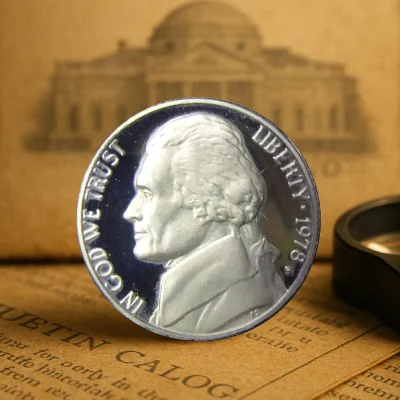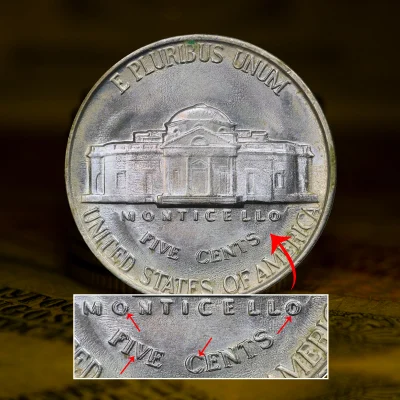The 1939 Nickel is a numismatist's rare find, offering both investment value
and historical value, making it a great coin for collectors to purchase.
Whether you are an old numismatist or a new one who's just starting out,
knowing the value of a 1939 nickel will enable you to make a knowledgeable
decision in case you sell or buy this old U.S. currency coin.
In this guide, we will discuss everything that you need to know concerning the
1939 Nickel Value, including the different factors that affect its value, the
main blunders to steer clear of, as well as some advice on how to verify and
grade.
What is the 1939 Nickel?
The 1939 Nickel is a numismatist's rare find, offering both investment value
and historical value, making it a great coin for collectors to purchase.
Whether you are an old numismatist or a new one who's just starting out,
knowing the value of a 1939 nickel will enable you to make a knowledgeable
decision in case you sell or buy this old U.S. currency coin.
In this guide, we will discuss everything that you need to know concerning the
1939 Nickel Value, including the different factors that affect its value, the
main blunders to steer clear of, as well as some advice on how to verify and
grade.
What is the 1939 Nickel?

The 1939 Nickel is one of the coins in the Jefferson Nickel series,
introduced in 1938 to replace the venerable Buffalo Nickel. The coin
features the design of Felix Schlag with the portrait of Thomas Jefferson,
the third president of the United States, on the obverse and his
residence, Monticello, on the reverse. The 1939 Nickel was minted at a
critical point in the history of the United States, just before the start
of World War II. Although not as well-known as some of the other coins in
the series, the 1939 coin remains a highly sought-after coin among
investors and collectors.
Although not as well-known as some of the other coins in the series, the
1939 coin remains a highly sought-after coin among investors and
collectors looking to buy
Jefferson Nickels
online.
1939 Nickel Value in Circulated vs Uncirculated
Condition
The worth of a Nickel in 1939 will significantly depend on its grade. Below is
a summary of how the grade influences its worth:
Circulated 1939 Nickel Value
A circulated 1939 Nickel, or a coin that has been used regularly, will be
worth less than an uncirculated coin because it wears out as it is used. It's
still worth something for its historical significance and worth over its face
value, though.
-
Good Condition (G-4): A 1939 Nickel in good
condition would range in price from $0.25 to $1.50, depending on the amount
of wear and demand in the marketplace.
-
Fine Condition (F-12): A fine nickel would range
between $2 and $3, depending on a clearer definition and less wear on the
coin.
-
Very Fine (VF-20): A very fine 1939 nickel is
worth between $4 and $6, with all of the details still in view and minimal
to no wear.
Uncirculated 1939 Nickel Value
Uncirculated 1939 Nickels, which have never been used in commerce previously,
are extremely valuable.
-
MS-60 to MS-63: The coin in uncirculated form
could be worth between $8 and $15. The coins have minor flaws but still have
most of their original detail.
-
MS-64 to MS-65: Higher-end uncirculated 1939
Nickels can sell for $20 to $40, and sometimes higher, based on the specific
grade and what's happening in the market.
-
MS-66 and Above: MS-66 and above coins are
top-notch. Coins with this grade can be worth over $50, with some over $100
if the coin is very rare or possesses superior characteristics.
Key Errors and Varieties to Look for in 1939 Nickels
One of the best parts about collecting 1939 Nickels is the potential for
discovering error or variety coins. These characteristics can add enormous
value to the coin. Some of the most obvious errors and varieties you will want
to look for are discussed below:
Double Die Errors

Double die is where the die that struck the coin was off center in
production, doubling the image. The 1939 Double Die Nickel is a major
variety, and collectors will pay a premium for it.
-
Value: The value of a 1939 Nickel with a
double die error can be $25 to over $200, depending on the definition of
doubling and the coin's condition.
Off-Center Strikes
Off-center strike is the consequence of not centering the coin with the die
when striking, resulting in parts of the design falling outside the edge of
the coin.
-
Value: Off-center strikes on 1939 Nickels
significantly increase the value of the coin and can be sold for anything
from $10 to $100 or more, depending on the degree of misalignment of the
strike.
Repunched Mint Marks
1939 Nickels with a repunched mint mark were created when the mint mark was
overstamped, creating a defect. They are relatively uncommon and will fetch a
premium.
-
Value: A 1939 Nickel with a repunched mint mark is worth $20 to $75,
depending on how bad and how readable the mint mark.
These varieties are great finds when investing in
rare U.S. coins.
1939 Buffalo Nickel Value: Comparison to Jefferson
Nickels
You can also be attracted to the 1939 Buffalo Nickel, a common coin among U.S.
coins. Although the
Buffalo Nickel
stopped being produced in 1938, there are collectors who compare the 1939
Jefferson Nickel to the previous run of Buffalo coins.
Buffalo Nickels are more premium in value, especially when in uncirculated
form, but the 1939 Jefferson Nickel is also valuable due to its historical
value and error possibilities.
-
Buffalo Nickel: A good 1939 Buffalo Nickel is
worth $5 to $15.
-
1939 Jefferson Nickel: A 1939 Jefferson Nickel,
based on grade and misprint, can be worth anything from $0.50 to $100 or
more.
The 1939 Jefferson Nickel is also made more valuable by its historical
background regarding President Thomas Jefferson and Monticello and thus is a
sought-after piece of
U.S. coins.
Authentication and Grading Tips for 1939 Nickels
To assess the worth of a 1939 Nickel, one should be aware of coin grading.
Grading and authentication play a key role in determining the actual value of
a coin. The following are some tips to guide you through authenticating and
grading a 1939 Nickel:
Authentication Tips
-
Observe for the Mint Marks: The 1939 Nickel will
contain a mint mark on the back of the coin just above the building. In case
it does not or is irregular, then it may be a sign of a fake.
-
Observe the Uniformity of Size and Weight: The
normal weight of a 1939 Nickel should be 5 grams, and the size should be
21.2 mm. If the coin is greatly different from these, then it may be a fake.
-
Examine the Surface: Authentic 1939 Nickels
exhibit a flat finish. If the surface looks too shiny, then the coin might
not be authentic.
Grading Tips
-
Apply the 70-Point Grading Scale: Coins are rated
from 1 to 70, with a score of 70 being flawless. Fine 12 or Very Fine 20
rating indicates the coin is in good or fair shape, but an MS-65 or better
indicates that the coin is close to perfect.
-
Look for Luster: Luster is the shiny quality of
the coin when light hits it. A circulated 1939 Grade Nickel will not lose
luster.
-
Inspect the Design: The degree of detail left in
the design on the coin is an important aspect of grading. A 1939 Nickel with
crisp details, particularly around Jefferson's portrait and Monticello, will
be worth more.
Tips for Collecting and Investing in 1939 Nickels
Whether you're collecting it for investment purposes or just for fun,
understanding how to purchase, sell, and store 1939 Nickels will help you make
the appropriate decisions and build a valuable collection in the long run. For
beginners, learn coin grading basics to better understand how professional
grading affects value.
Collecting Tips
-
Highlight Condition: Condition is crucial. Always
try to buy high-grade 1939 Nickels as they will have a better chance of
increasing in value over the years.
-
Search for Scarce Errors: Error coins such as
double dies, off-center strikes, or repunched mint marks are highly coveted.
Those scarce discoveries are thrilling additions to any collection.
-
Join a Collector Group: Think about becoming a
member of a numismatic club or online community to benefit from the
experience and advice of other collectors and stay informed about current
trends in the marketplace.
Investment Tips
-
Begin with High-Grade Coins: Purchasing high-grade
1939 Nickels with little to no wear will most probably reap you the largest
profit.
-
Diversify Your Investment: Although 1939 Nickels
are a sound investment, diversify your coin portfolio and investment. Invest
in several U.S. coins with different time frames. In addition to Nickels,
consider gold and silver for portfolio diversification.
-
Deal with Reliable Dealers: In order to get the
most value for your 1939 Nickel, buy from reliable dealers and have your
coins graded and certified by professional services such as the Numismatic
Guaranty Corporation (NGC) or the Professional Coin Grading Service (PCGS).
Shop Jefferson Nickels online only from trustworthy
sources.
Conclusion: Is a 1939 Nickel a Good Investment?
The 1939 Nickel is both an investment piece and a piece of numismatic
history. Whether you are a seasoned collector or an eager new purchaser,
this coin can be a worthwhile addition to your collection. With details on
each coin's value based on condition, major error varieties, and market
trends, you'll be making informed decisions that will pay dividends in the
years to come.
Remember that purchasing high-quality coins and educating yourself on
errors, authentication, and grading can enable you to maximize your
investment.
Are you willing to enter the universe of 1939 Nickels and perhaps find a
scarce error coin that will appreciate in value in years to come? Begin
investigating your possibilities today and invest in a slice of U.S. history
that will be worth something for decades to come.
